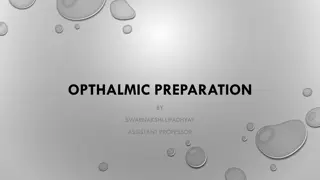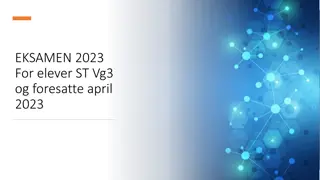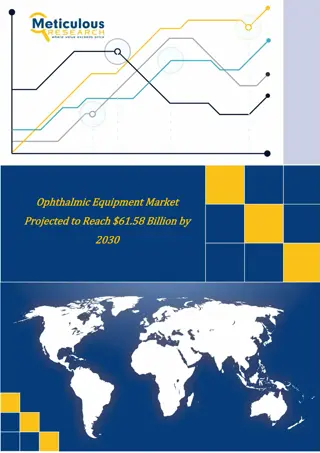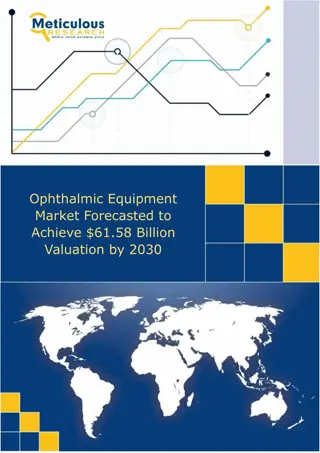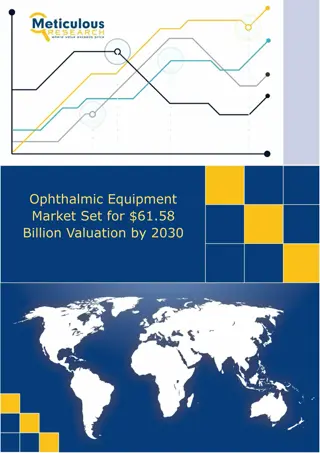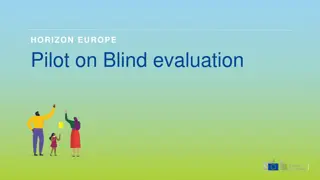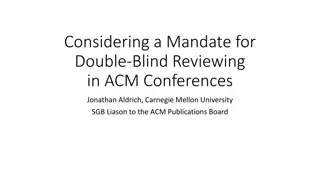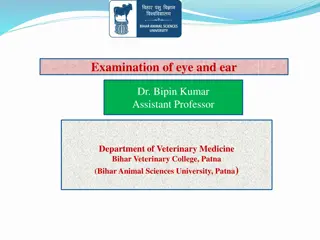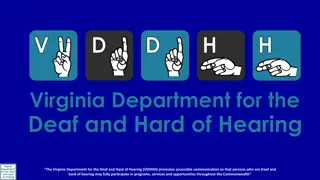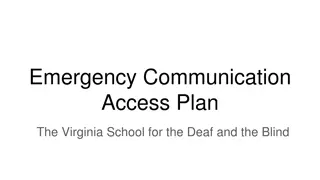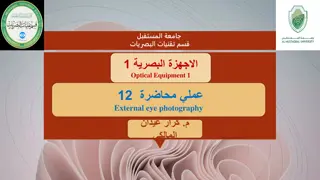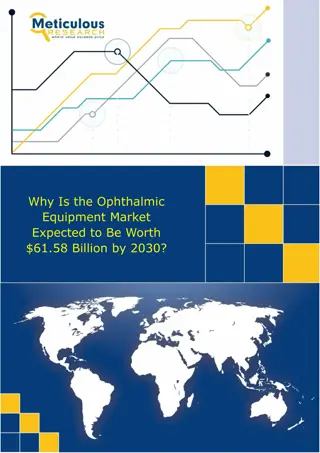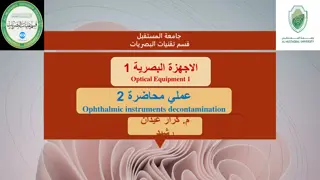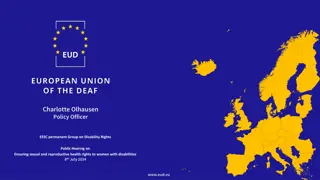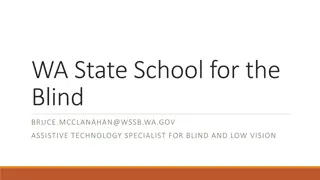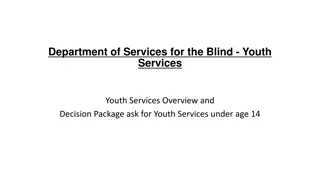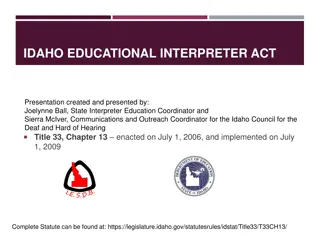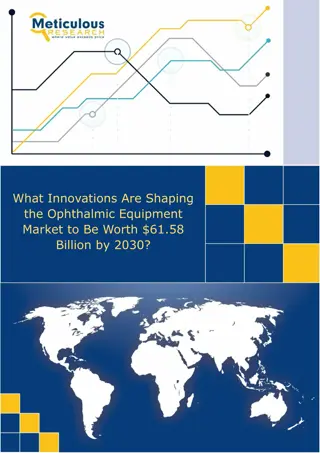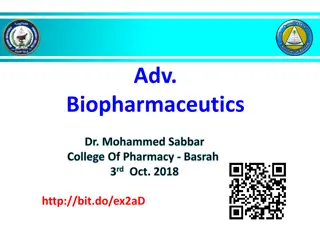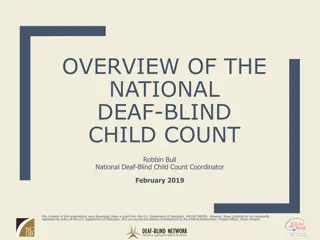Enhancing Ophthalmic Exams for Deaf & Blind Students
This project focuses on improving access to ophthalmic exams for deaf and blind students at the Colorado School for the Deaf and Blind. Through collaboration with community partners, addressing specific needs, and utilizing available assets, the project aims to overcome barriers and provide necessary eye care services to this underserved population.
Download Presentation

Please find below an Image/Link to download the presentation.
The content on the website is provided AS IS for your information and personal use only. It may not be sold, licensed, or shared on other websites without obtaining consent from the author.If you encounter any issues during the download, it is possible that the publisher has removed the file from their server.
You are allowed to download the files provided on this website for personal or commercial use, subject to the condition that they are used lawfully. All files are the property of their respective owners.
The content on the website is provided AS IS for your information and personal use only. It may not be sold, licensed, or shared on other websites without obtaining consent from the author.
E N D
Presentation Transcript
INTRODUCTION OF INTRODUCTION OF OPHTHALMIC EXAM FOR OPHTHALMIC EXAM FOR DEAF & BLIND STUDENTS DEAF & BLIND STUDENTS Neil Bishop & Curtis Pacheco University of Colorado School of Medicine Colorado Springs Branch Class of 2021
Outline Outline Community Partners Assets & Needs Project Goals Importance Outcomes Leadership Lessons Sustainability References
Community Partners Community Partners Everything for Sight local, non-profit organization founded by Dr. James Barad that provides funding for comprehensive medical and surgical eye care to those in need. Colorado School for Deaf & Blind - the Colorado School for the Deaf and the Blind (CSDB) is a state-funded school within the Colorado Department of Education. The school was established for the purpose of providing comprehensive educational services for children, birth to age 21, who are blind/visually impaired and/or deaf/hard of hearing. Jim Olson: Coordinator of Colorado Instructional Materials Center at CSDB, has offered critiques and feedback to improve the educational tools created. From the vantage point of our community partners, we learned that the deaf and blind community are a disadvantage for receiving and keeping up with ophthalmologic exams.
Assets & Needs Assets & Needs Many of the students at the CSDB are extremely anxious before getting an eye exam The blind students are often nervous because they cannot see the unique equipment used in the exam. The deaf children who are unable to see instructions once they are dilated or seated behind instruments that block or impair their vision (phoropters, bright lights, etc.) often feel vulnerable or confused. As EverythingForSight has started providing exams to the CSDB s population, they have recognized how difficult this population is to examine for the above reasons.
Assets & Needs Assets & Needs Everything For Sight CSDB Assets Assets - Staff trained to work with deaf and blind students - Doctors willing to provide free service, including pediatric ophthalmologists - Complete ophthalmologic exam room on campus - Eager to help underserved and at-risk communities - Flexibility on when students can get exams Needs - Assistance in providing care for students with special needs Needs - Exam equipment - Access to medical providers - Assistance in making exam process easier for students
Shared Goals Shared Goals Improve the eye exams provided by Everything For Sight doctors at CSDB Relieve students anxiety going into the exam Help prepare students for the exam by knowing what will happen so they can better cooperate in facilitating a quality exam Create a resource that can be used by students of varying visual and hearing abilities before getting the exam
Project Goals Project Goals To develop an education tool to introduce deaf and blind patients to the ophthalmologic examination. To include the following: Steps of the exam Equipment used Both printed material and narrated presentation: Printed materials: Read by deaf students; read to blind students Narrated Presentation: For further accessibility
Project Goals Project Goals Further Redefined Further Redefined 1. Create an accessible and narrated PowerPoint presentation describing the ophthalmologic exam and showing the equipment used. This would enable seeing students to view the presentation, students with poorer vision to view it via assistive devices, and blind students to follow along with the spoken narration and description. This presentation could be shown in classrooms in its original format with the narration or printed in book format. 2. Create a written document describing the eye exam that could be read by students with good vision and could also be translated into Braille in the future if the school would find that helpful. This would serve as another resource to help describe the ophthalmologic exam, answer questions, and offer information on ophthalmic conditions that students may also be affected by.
Importance Importance Of the five senses, vision and hearing are the primary senses through which we collect information: As much as 80% of what we learn is learned visually. Hearing is the basis of the communication/language system that most people use. There is wide variation in communication barriers and solutions to these barriers due to the wide range of disability in the CSDB s student population Achieving effective communication in health care settings can be extremely complex especially with the use of interpreters
Outcomes: Outcomes: With collaboration from our community partner, namely Jim Olson from the Colorado School of Deaf & Blind, we have created both a narrated PowerPoint presentation outlining the ophthalmologic exam as well as a written component that closely mirrors the content of the powerpoint presentation. These resources will be shared by the school to be accessed by students, teachers, and parents. The presentation will also be saved on the school s intranet for on-demand access at the school.
Leadership Lessons Leadership Lessons We believe that the two most important leadership lessons learned from this project are communication and accountability. Communication: Communication is the foundation of our relationships with other people. It is vital to establish and maintain clear communication with those you are working with in order to work towards the same goal, find and mitigate potential issues early on, and avoid misunderstandings. Accountability: When working with others (community partners, mentors, colleagues, etc.), being dependable, reliable, and accountable is important in building trust. Trust is important in keeping relationships strong and allows for those you are collaborating with to have confidence in your work.
Leadership Lessons Leadership Lessons - - Continued Continued Community Engagement In working through this project, we have learned that it is important to have a community partner that is keenly aware of the needs and demands of the population you re trying to engage with. For example, the nuances of the needs of the CSDB s student population would have been very difficult to determine if it were not for the help of Jim Olson (CSDB coordinator) and Dr. Barad.
Sustainability Sustainability We believe that this tool can be continually adjusted and improved upon in the future. Through the tools use, further edits can be identified by those at the CSDB and implemented by the next set of medical students. As for next steps ; we believe there can be more done to identify ways to further alleviate the anxiety and discomfort that patient s affected with deaf/blindness may have surrounding medical exams.
References References Hillbriggs, F., Dial, J., Morere, D., & Joyce, A. (2007). Neuropsychological assessment of persons with physical disability, visual impairment or blindness, and hearing impairment or deafness. Archives of Clinical Neuropsychology, 22(3), 389 404. doi: 10.1016/j.acn.2007.01.013 Withers, J., & Speight, C. (2017). Health Care for Individuals with Hearing Loss or Vision Loss. North Carolina Medical Journal, 78(2), 107 112. doi: 10.18043/ncm.78.2.107 Hyv rinen, L. (2007). Implications of Deafblindness on Visual Assessment Procedures: Considerations for Audiologists, Ophthalmologists, and Interpreters. Trends in Amplification, 11(4), 227 232. doi: 10.1177/1084713807308364 Deaf-Blindness. Project IDEAL, www.projectidealonline.org/v/deaf-blindness/.


